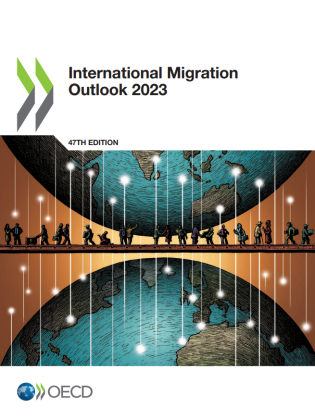International Migration Outlook 2023

The 2023 edition of International Migration Outlook analyses recent developments in migration movements and the labour market inclusion of immigrants in OECD countries. It also monitors recent policy changes in migration governance and integration in OECD countries. This edition includes two special chapters on the labour market integration of migrant mothers and on fertility patterns among migrant populations in OECD countries. The Outlook also includes country notes and a detailed statistical annex.
Migration to OECD countries is at unprecedented levels. With more than 6 million new permanent immigrants (not including Ukrainian refugees), permanent-type migration to OECD countries reached a record level in 2022. This was driven by increases in humanitarian and managed labour migration, along with accompanying family members. More than one in three OECD countries registered their highest levels in at least 15 years, with several countries, such as Canada and the United Kingdom, reporting the highest figures on record. Temporary labour migration, especially of the seasonal kind, also registered a strong increase. The number of admissions of international students neared 2 million for the first time.
On top of these figures come the inflows of refugees from Ukraine. As of June 2023, there were around 4.7 million displaced Ukrainians in OECD countries. Germany, Poland and the United States host the highest number of refugees from Ukraine in absolute terms, while Estonia, the Czech Republic and Lithuania have received the highest number as a share of the population.
Asylum applications in the OECD were also at a record high in 2022. Over 2 million new applications were lodged in OECD countries in 2022, the highest number recorded so far, well above the 2015/16 previous record of 1.7 million and twice the 2021 level. The increase was largely driven by soaring applications in the United States, at 730,000 compared with less than 190,000 in 2021.
In the meantime, acquisitions of citizenship in OECD countries also reached a new high in 2022, at 2.8 million, according to preliminary data.